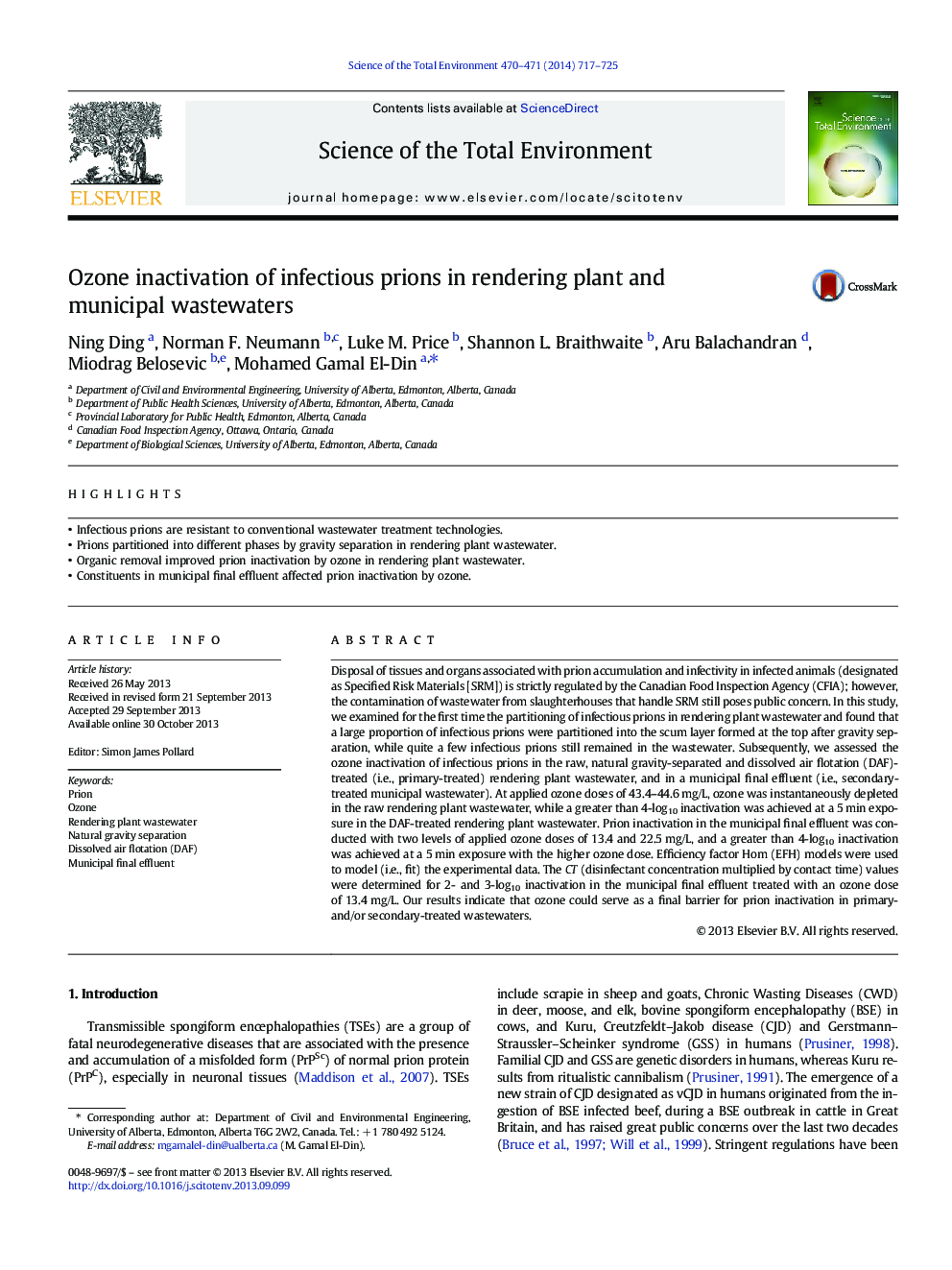| کد مقاله | کد نشریه | سال انتشار | مقاله انگلیسی | نسخه تمام متن |
|---|---|---|---|---|
| 6331477 | 1619793 | 2014 | 9 صفحه PDF | دانلود رایگان |
عنوان انگلیسی مقاله ISI
Ozone inactivation of infectious prions in rendering plant and municipal wastewaters
ترجمه فارسی عنوان
خنثی سازی ازن از پدیده های عفونی در تصفیه فاضلاب های گیاهی و شهری
دانلود مقاله + سفارش ترجمه
دانلود مقاله ISI انگلیسی
رایگان برای ایرانیان
موضوعات مرتبط
علوم زیستی و بیوفناوری
علوم محیط زیست
شیمی زیست محیطی
چکیده انگلیسی
Disposal of tissues and organs associated with prion accumulation and infectivity in infected animals (designated as Specified Risk Materials [SRM]) is strictly regulated by the Canadian Food Inspection Agency (CFIA); however, the contamination of wastewater from slaughterhouses that handle SRM still poses public concern. In this study, we examined for the first time the partitioning of infectious prions in rendering plant wastewater and found that a large proportion of infectious prions were partitioned into the scum layer formed at the top after gravity separation, while quite a few infectious prions still remained in the wastewater. Subsequently, we assessed the ozone inactivation of infectious prions in the raw, natural gravity-separated and dissolved air flotation (DAF)-treated (i.e., primary-treated) rendering plant wastewater, and in a municipal final effluent (i.e., secondary-treated municipal wastewater). At applied ozone doses of 43.4-44.6Â mg/L, ozone was instantaneously depleted in the raw rendering plant wastewater, while a greater than 4-log10 inactivation was achieved at a 5Â min exposure in the DAF-treated rendering plant wastewater. Prion inactivation in the municipal final effluent was conducted with two levels of applied ozone doses of 13.4 and 22.5Â mg/L, and a greater than 4-log10 inactivation was achieved at a 5Â min exposure with the higher ozone dose. Efficiency factor Hom (EFH) models were used to model (i.e., fit) the experimental data. The CT (disinfectant concentration multiplied by contact time) values were determined for 2- and 3-log10 inactivation in the municipal final effluent treated with an ozone dose of 13.4Â mg/L. Our results indicate that ozone could serve as a final barrier for prion inactivation in primary- and/or secondary-treated wastewaters.
ناشر
Database: Elsevier - ScienceDirect (ساینس دایرکت)
Journal: Science of The Total Environment - Volumes 470â471, 1 February 2014, Pages 717-725
Journal: Science of The Total Environment - Volumes 470â471, 1 February 2014, Pages 717-725
نویسندگان
Ning Ding, Norman F. Neumann, Luke M. Price, Shannon L. Braithwaite, Aru Balachandran, Miodrag Belosevic, Mohamed Gamal El-Din,
